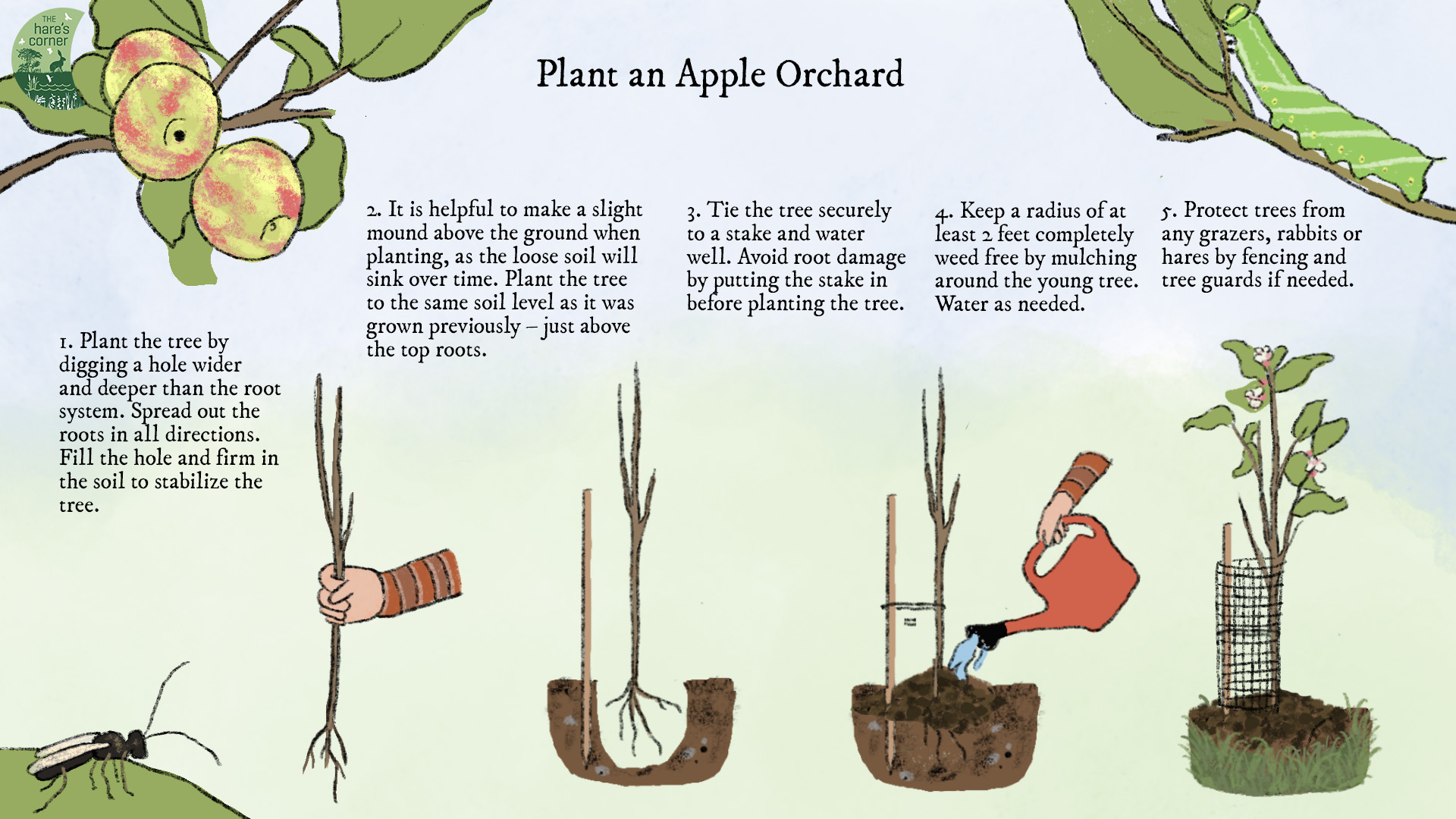
Plant an Apple Orchard
Where:
- A sunny, but sheltered location with free-draining, rich loamy soil, receiving 6-8 hours of direct sunlight daily.
- Apple trees do well in slightly acidic or neutral soil of approx. pH of 6.5
- Not in an area already rich in biodiversity e.g. species-rich wildflower meadow, mature woodland, marshy wetland or active peatland. Typically, arable or grassland areas with few existing wildflowers, or fungi will make good planting locations.
- Preferably not where related fruit trees (e.g. apple, pear, plum) or roses were grown recently, or are currently growing. This is due to the risk of apple replant disease.
Which:
- Choose Irish apple varieties or varieties that have been successfully grown in Ireland for many years.
- Seek advice as to the best varieties and most suitable root stock for your soil and situation.
- Apple trees are insect pollinated so best fruit set is assured by having at least three apple varieties of similar flowering season planted in the vicinity. Consult your supplier for the most suitable pollinating partners for your tree.
- Responsible suppliers will provide a guide on planting distances, stakes and future management such as mulching and pruning. Some general information is available from Irish Seed Savers
When: Winter
- The best time of year to plant apple trees is when the roots are dormant as they are less easily disturbed by the moving process: typically, from December to February.
How:
- Unpack trees within a day of getting them and either plant straight away or keep them damp until ready to plant by ‘heeling’ them into free-draining soil outdoors. This is to ensure their roots do not dry out, and are kept damp but not saturated with water.
- Plant the tree in dry weather by digging a hole wider and deeper than the pot or root system. This helps to loosen the soil for root establishment. Spread out the roots in all directions. Fill the hole and firm in the soil to stabilize the tree.
- It is helpful to make a slight mound above the ground when planting, as the loose soil will sink over time, creating a hollow which could fill with water to the detriment of the young tree.
- Plant the tree to the same soil level as it was grown previously – just above the top roots. There is usually a colour difference near the base of the trunk where the previous soil level changed from below to above ground. Keep the graft point above soil level to prevent the grafted variety from developing its own roots.
- Tie the tree securely to a stake and water well. Avoid root damage by putting the stake in before planting the tree.
Care for your tree: Watering the tree will be necessary in dry conditions. Keep a radius of at least 2 feet completely weed free by mulching around the young tree. Fruit trees feed almost exclusively in the top soil and will be in competition for nutrients with grass and other vigorous plants (mown or grazed grass tends compete more strongly for nutrients). Protect trees from any grazers by fencing if needed, and use tree guards to prevent rabbits or hares from stripping the bark if they are in the area.
Benefits: Fruit trees provide food for adult insects in the form of nectar, pollen and sap; and leaves for their larvae (e.g. caterpillars). They form and sustain part of the food web that will support birds and mammals. The insects associated with fruit trees are eaten by insectivorous birds and the caterpillars that feed on them are a key food for fledglings. Fallen fruit can be an important autumn food for birds like Blackbirds and Blackcap, as well as mammals such as mice and even foxes. As they age, the trees will be colonised by a range of lichens and mosses which will provide micro habitats for an even wider range of insects and invertebrates.